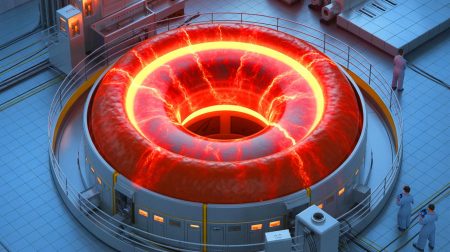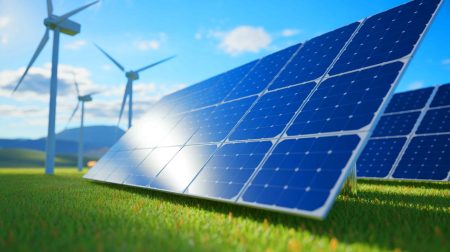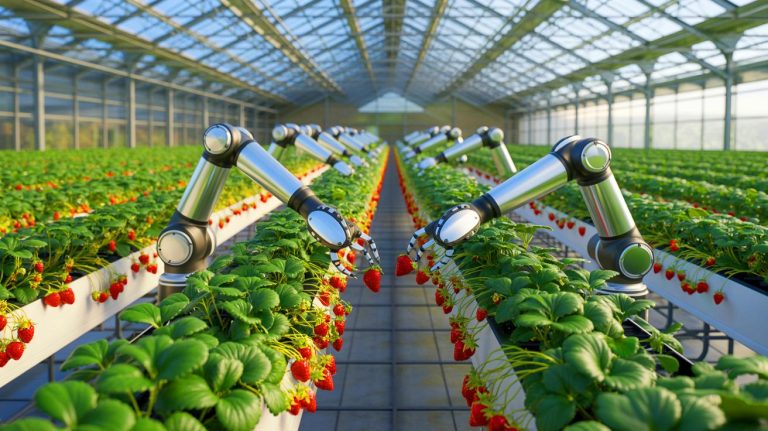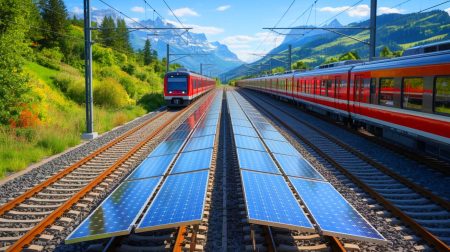| IN A NUTSHELL |
|
In the heart of Lincolnshire, England, a groundbreaking agricultural experiment is unfolding. James Dyson, known for his revolutionary household appliances, has embarked on a new venture: high-tech strawberry farming. This initiative merges cutting-edge technology with traditional agriculture, aiming to redefine how food is grown. The vertical greenhouse built by Dyson exemplifies this novel approach, integrating robotics, artificial intelligence, and sustainable practices. With a focus on local production and environmental stewardship, Dyson’s endeavor could signal a transformative shift in agriculture, offering a glimpse into a more sustainable and technologically integrated future.
Revolutionizing Agriculture With Technology
The high-tech greenhouse, sprawling over 25 acres, is a marvel of modern engineering. The structure is characterized by its lengthy glass façade, stretching 2,493 feet, housing rotating cylindrical platforms. These platforms, each 79 feet long, rotate to ensure optimal daylight exposure for the strawberry plants. This innovative design maximizes space utilization, allowing for a larger cultivation area and promoting uniform fruit growth.
Within this technological ecosystem, various robotic systems play crucial roles. Mobile robots emit UV light to prevent mold, while others release beneficial insects to combat pests naturally, eliminating the need for pesticides. When the strawberries reach peak ripeness, a fleet of 16 robotic arms gently harvests the fruit, achieving a remarkable yield of up to 200,000 strawberries in just one month. This integration of technology enhances efficiency and minimizes human intervention in the cultivation process.
Industrial Approach to Farming
James Dyson has likened this method to manufacturing, stating, “Cultivating is like manufacturing.” His goal is to enhance productivity while reducing resources. This entails using less land, water, and chemicals, while gaining greater control over the quality and consistency of the produce. The greenhouse is powered by an anaerobic digester, which converts gases from cereals into energy. This energy powers turbines, and excess heat warms the greenhouse.
The byproduct, known as digestate, serves as an organic fertilizer for outdoor crops. Additionally, rainwater collected from the roof is used for irrigation, creating a nearly self-sufficient loop. This approach reflects a shift towards more sustainable practices in agriculture, emphasizing the need to produce more with fewer resources.
Local Solutions to Global Challenges
Beyond its technical prowess, Dyson’s project addresses significant environmental and economic issues. By producing strawberries locally, the initiative reduces fruit imports, secures the UK’s food supply, and lowers the carbon footprint associated with traditional agriculture. Dyson strawberries have already made their way to select Marks & Spencer stores, showcasing the practicality of this local production model.
While this high-tech agricultural model is not intended to replace all forms of farming, it illustrates a viable path forward. A path where technology enhances nature’s resilience and productivity, while adhering to sustainable principles. This model suggests a future where agriculture can be both technologically advanced and environmentally conscious.
A Prototype for the Future
Dyson’s automated greenhouse stands as a functional prototype of future farming. This is not a distant or theoretical vision but a working operation capable of producing over 2,645,000 pounds of strawberries annually. It integrates advanced tools from robotics, AI, and renewable energy at every stage.
In a world grappling with climate change, resource scarcity, and population pressures, this approach could inspire new agricultural models. Models where engineering and ecology finally work in harmony, offering hope for a sustainable future in food production.
As Dyson continues to refine this innovative agricultural model, the implications for the future of farming are profound. Could this high-tech, sustainable approach become the norm in the face of growing global challenges? The potential for such a transformation is immense, and only time will reveal the true impact of Dyson’s pioneering efforts.
Did you like it? 4.7/5 (24)






This is amazing! Who knew Dyson would move from vacuums to strawberries? 🍓
How do they ensure that the strawberries taste good? Artificial intelligence can’t taste test, right?
What happens to the strawberries that aren’t perfect? Do they have a plan for less-than-perfect fruit?
The future is here, folks! Next up, self-cleaning strawberries? 😂
Is this technology patented by Dyson? Could other farms adopt similar methods?
How much energy does the anaerobic digester actually save compared to traditional methods?
Seems like a really efficient system, but what about the initial costs? Can smaller farms afford this?
Impressive, but are there any long-term studies on the environmental impact of such high-tech farming? 🤔
What happens if the robots malfunction? Do they have a backup plan involving humans?
Maybe next they can make a robot that cleans my house while growing strawberries. 😆
Thank you, Dyson, for leading the way in sustainable farming! 🌍
Does this mean we’ll see cheaper strawberries in the supermarket soon?
Incredible innovation! But how do they handle pests without pesticides?
I’d love to see a video tour of this greenhouse in action—sounds like sci-fi!
Does anyone else think this sounds like the beginning of a robot farming takeover? 😜
Can this model be adapted for other crops, or is it only for strawberries?
Is it just me, or is Dyson trying to take over the world one strawberry at a time?
Would love to hear from the local farmers in Lincolnshire—what do they think?
How do they balance AI intervention with natural growth processes? Seems like a tricky balance.
Can’t wait to try these strawberries and see if they live up to the hype! 🍓
Interesting concept, but are there any ethical concerns with AI in agriculture?
I’m all for innovation, but this sounds like farming for the 1%. What’s the benefit for everyone else?
Is Dyson involved in any other agricultural projects? This could be the start of something bigger!
Strawberries grown by robots—what a time to be alive! 🤖
Are these strawberries organic? How does the high-tech nature of the farm impact their classification?
Seems promising, but how do they ensure biodiversity in such a controlled environment?
Thanks for sharing this! It’s exciting to see the potential of technology in sustainable agriculture.